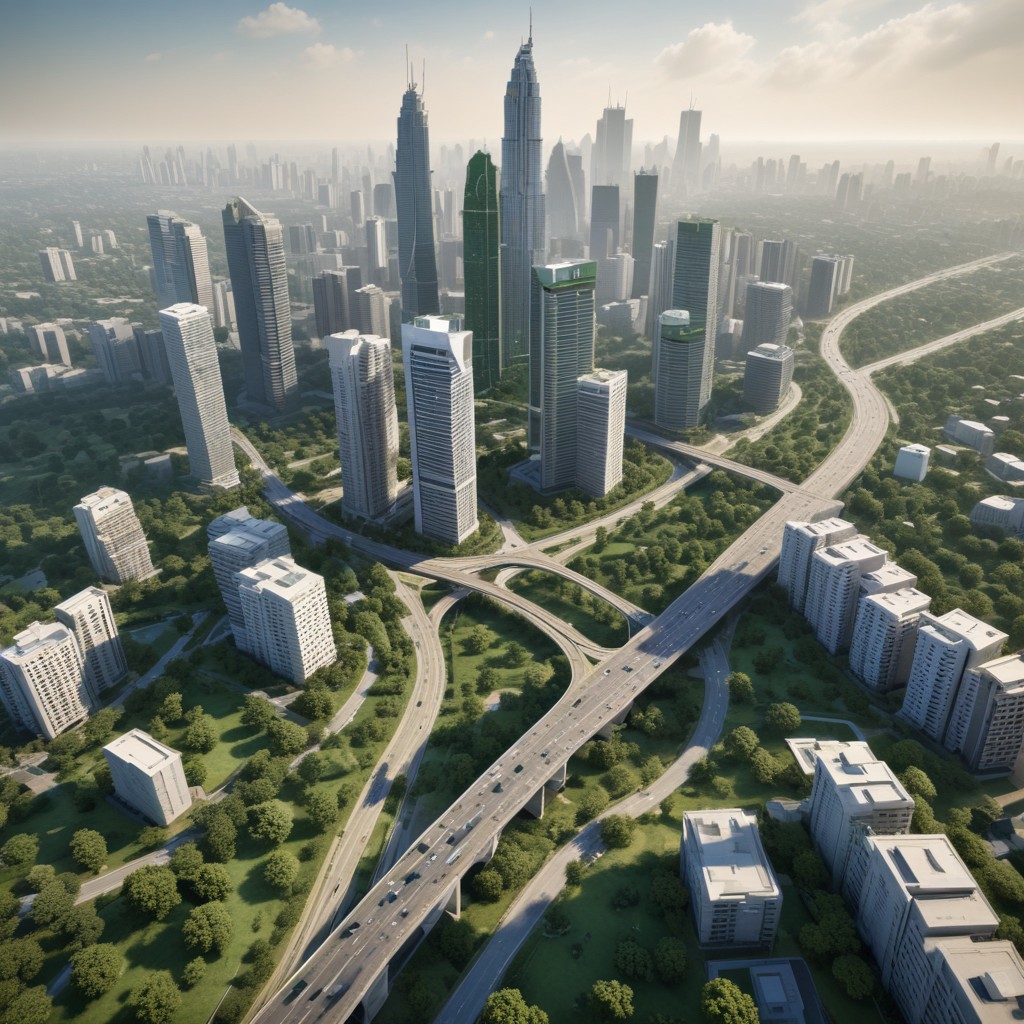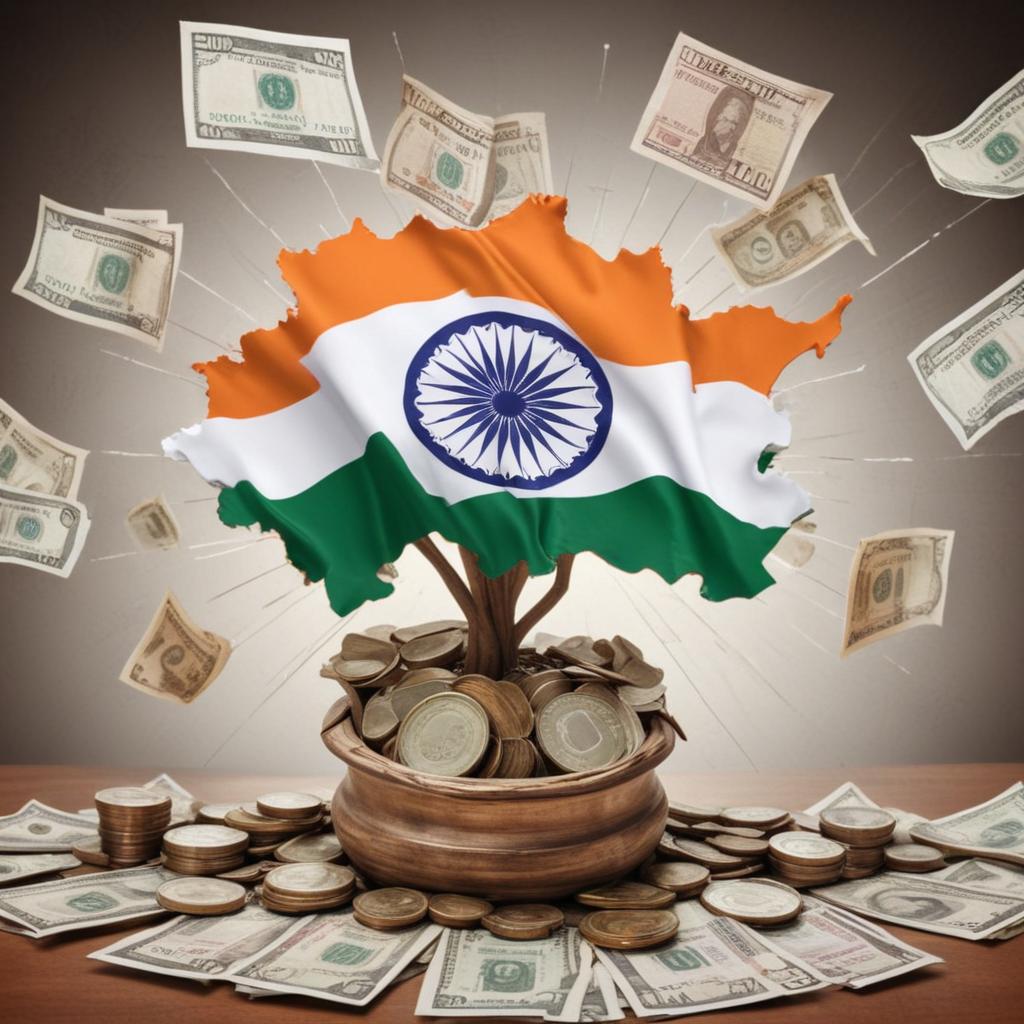
Discover the ambitious vision of “Viksit Bharat by 2047,” a plan to transform India into a developed nation by 2047. Learn about the key initiatives and strategies that will drive India’s growth and development.
Can India become a developed nation by 2047? Explore the ambitious vision of “Viksit Bharat” (Developed India), its goals, challenges, and the path towards a prosperous and sustainable future.
India, the world’s second-most populous country, has set its sights on becoming a developed nation by 2047. This ambitious vision, known as “Viksit Bharat by 2047,” aims to transform the country into a global leader in various sectors, including technology, healthcare, and education. In this article, we will explore the key initiatives and strategies that will drive India’s growth and development towards achieving this vision.
Introduction
“Viksit Bharat 2047” translates to “Developed India by 2047.” It’s a national vision championed by the Indian government, aiming to transform India into a fully developed nation by the 100th year of its independence. This ambitious goal encompasses various aspects of development, including a thriving economy, social equity, environmental responsibility, and strong governance.
The Pillars of Viksit Bharat by 2047
The vision of Viksit Bharat rests on five key pillars:
- Economic Growth: A strong and resilient economy is fundamental. This translates to robust infrastructure, a skilled workforce, high levels of foreign investment, and a flourishing startup ecosystem.
- Social Progress: Uplifting the lives of all citizens is crucial. This encompasses eradicating poverty and hunger, ensuring quality education and healthcare for all, and promoting gender equality.
- Environmental Sustainability: Balancing development with environmental protection is vital. This includes adopting renewable energy sources, mitigating climate change impacts, and promoting sustainable practices.
- Infrastructure Development: Modern infrastructure is the backbone of a developed nation. This encompasses a robust transportation network, reliable energy grids, efficient irrigation systems, and smart cities.
- Good Governance: Effective and transparent governance is essential. This includes efficient bureaucracy, citizen-centric policies, and strong institutions that uphold the rule of law.
The Road to Viksit Bharat

Achieving Viksit Bharat by 2047 is a monumental task, requiring a multi-pronged approach:
- Investing in Human Capital: Developing a skilled and educated workforce is crucial. This involves revamping the education system, promoting vocational training, and fostering a culture of innovation and entrepreneurship.
- Technological Advancement: Embracing new technologies like artificial intelligence, robotics, and big data is essential for economic growth and improved efficiency in various sectors.
- Urban Development: Creating sustainable and inclusive cities can drive economic activity and improve quality of life. This involves promoting smart city initiatives and developing robust public transportation systems.
- Rural Transformation: Uplifting rural India is crucial for overall development. This includes focusing on agricultural reforms, promoting rural entrepreneurship, and improving access to healthcare and education in rural areas.
Key Initiatives:
To achieve this vision, the government has launched several key initiatives, including:
- Atmanirbhar Bharat: A self-reliance initiative aimed at promoting domestic manufacturing and reducing dependence on imports.
- Digital India: A program aimed at leveraging technology to improve governance, enhance public services, and create a more connected and inclusive society.
- Swachh Bharat: A cleanliness initiative aimed at ensuring a clean and healthy environment for all citizens.
- Ayushman Bharat: A healthcare initiative aimed at providing quality healthcare to all citizens, especially the poor and vulnerable.
Strategies:
To achieve the “Viksit Bharat by 2047” vision, the government has adopted several strategies, including:
- Investment in Infrastructure: The government plans to invest heavily in infrastructure development, including roads, railways, airports, and seaports, to improve connectivity and facilitate economic growth.
- Promoting Startups: The government aims to promote entrepreneurship and innovation by providing support to startups, including funding, mentorship, and access to markets.
- Enhancing Education: The government plans to enhance education by increasing access to quality education, improving teacher training, and promoting vocational training.
- Encouraging Foreign Investment: The government aims to attract foreign investment by creating a favorable business environment, reducing regulatory hurdles, and providing incentives for foreign investors.
Key milestones India needs to achieve Viksit Bharat by 2047

To achieve the vision of “Viksit Bharat” by 2047, India needs to focus on several key milestones across various sectors. Here are some of the key milestones:
Economic Growth:
- USD 30 trillion economy: India aims to become one of the two largest economies in the world by 2047, with a nominal GDP of USD 30 trillion.
- Per-capita income of USD 18,000-20,000: The country aims to increase its per-capita income significantly to USD 18,000-20,000 by 2047.
- Strong public finances and robust financial sector: India needs to develop a strong public finance system and a robust financial sector to support its economic growth.
Environmental Sustainability:
- Increase renewable energy capacity: India aims to increase its non-fossil energy capacity to 500 GW by 2030 and meet 50% of its energy requirements from renewable energy by 2030.
- Reduce carbon emissions: The country aims to reduce its total projected carbon emissions by one billion tonnes by 2030 and achieve net-zero carbon emissions by 2070.
- Green growth and climate action: India needs to focus on green growth and climate action through initiatives such as green fuel, green energy, green farming, green mobility, green buildings, and green equipment.
Social Progress:
- Inclusive development: India needs to ensure inclusive development by reducing poverty and inequality, improving healthcare, and enhancing education.
- Sabka Saath, Sabka Vikas, Sabka Vishwas, and Sabka Prayas: The country needs to focus on collective efforts and cooperation across all sectors to achieve its development objectives.
- Empowering youth: India needs to empower its youth with skills and education to create more employment opportunities and drive innovation.
Infrastructure Development:
- World-class infrastructure: India needs to develop world-class infrastructure in both rural and urban areas, including roads, railways, airports, and seaports.
- National infrastructure pipeline: The country needs to implement its national infrastructure pipeline to support its economic growth and development.
Technology and Innovation:
- Technology-driven and knowledge-based economy: India aims to become a technology-driven and knowledge-based economy by 2047, with a strong focus on innovation and entrepreneurship.
- Critical and emerging technologies: The country needs to focus on critical and emerging technologies like blockchain, AI, and IoT to drive innovation and growth.
Governance and Public Finance:
- Strong public finances: India needs to develop strong public finances to support its economic growth and development.
- Robust financial sector: The country needs to develop a robust financial sector to support its economic growth and development.
Education and Skill Development:
- Enhanced education: India needs to enhance its education system to provide quality education to all its citizens, especially the youth.
- Skill development: The country needs to focus on skill development to create more employment opportunities and drive innovation.
Healthcare and Social Welfare:
- Improved healthcare: India needs to improve its healthcare system to provide quality healthcare to all its citizens, especially the poor and vulnerable.
- Social welfare: The country needs to focus on social welfare initiatives to ensure the dignity and well-being of all its citizens.
International Partnerships:
- Global partnerships: India needs to establish strong global partnerships to drive its economic growth and development, particularly in areas like technology and innovation.
These key milestones will help India achieve its vision of becoming a developed nation by 2047.
Challenges and Opportunities
India faces several significant challenges in achieving its vision of becoming a Viksit Bharat by 2047. Some of the key challenges include:
- Infrastructure Development: India needs to develop robust infrastructure in various sectors such as transportation, energy, and communication to support its economic growth and development.
- Global Capital: India requires significant global capital to accelerate its vision of Viksit Bharat 2047. This includes addressing challenges on infrastructure, regulatory, and tax fronts.
- Poverty and Inequality: India still faces significant poverty and inequality, which can hinder economic growth and social development.
- Environmental Sustainability: The country needs to address environmental concerns such as climate change, air and water pollution, and biodiversity loss to ensure sustainable development.
- Education and Skill Development: India needs to enhance its education system and focus on skill development to create a technologically adept workforce that can drive innovation and growth.
- Healthcare and Social Welfare: The country needs to improve its healthcare system and focus on social welfare initiatives to ensure the dignity and well-being of all its citizens.
- Governance and Public Finance: India needs to develop strong public finances and a robust financial sector to support its economic growth and development.
- Demographic Changes: The country faces significant demographic changes, including a rapidly growing population, which can pose challenges for infrastructure, resources, and social services.
- Global Competition: India needs to compete globally in various sectors, including technology, manufacturing, and services, to achieve its vision of becoming a developed nation.
- Policy and Regulatory Framework: The country needs to develop a favorable policy and regulatory framework to support entrepreneurship, innovation, and growth.
- Transport Infrastructure: India needs to develop robust transport infrastructure, including roads, railways, airports, and seaports, to facilitate economic growth and connectivity.
- Digital Transformation: The country needs to leverage technology to improve governance, enhance public services, and create a more connected and inclusive society.
These challenges are significant and require comprehensive efforts from the government, private sector, and civil society to address them effectively.
Viksit Bharat 2047 Registration
A dedicated web page has been established to give ideas and suggestions for achieving the visions of Viksit Bharat 2047 of shaping a developed India by 2047. The process for registration and providing suggestions and ideas to achieve the goal of Viksit Bharat are as follows:
Step 1: Visit the MyGov portal.
Step 2: Click on the ‘Share Your Ideas for Viksit Bharat’ button.
Step 3: Enter your name and mobile number/email ID and click the ‘Log In with OTP’ button.
Step 4: Enter the OTP received on your mobile number/email and click ‘Submit’.
Step 5: Select the participate as ‘Student’ or ‘Non Student’ and enter the required details, such as education/occupation, name, gender, age, mobile number, email, and address, and click the ‘Confirm and Proceed’ button.
Step 6: Select one or more of the themes to share your idea on and provide your idea or suggestion towards making India a developed nation and how to achieve it and click ‘Submit’.
Viksit Bharat 2047 aims to make India a developed nation with economic growth, environmental sustainability, social progress and good governance. Any individual can propose his/her ideas for developing India and achieving the vision of a developed nation or Vikist Bharat by 2047 on the MyGov portal.
FAQs
What are the key benefits of achieving Viksit Bharat?
A developed India would see improved living standards, a stronger economy, better healthcare and education, and a more empowered and prosperous society.
What role can citizens play in Viksit Bharat?
Citizens can actively participate by being responsible and contributing to the nation’s development. This includes following the law, paying taxes, and actively engaging in the democratic process.
How is the government working towards achieving Viksit Bharat?
The government is implementing various initiatives like “Make in India,” “Skill India,” and “Digital India” to boost economic growth and infrastructure development. Additionally, social welfare programs and educational reforms are aimed at improving social indicators.
Conclusion
Viksit Bharat by 2047 is a bold vision that requires a collective effort from the government, businesses, and citizens. By focusing on economic growth, social progress, environmental sustainability, and good governance, India has the potential to emerge as a leading global power in the coming decades. The journey towards a Viksit Bharat will be filled with challenges, but the potential rewards for all Indians make it a vision worth striving for.

